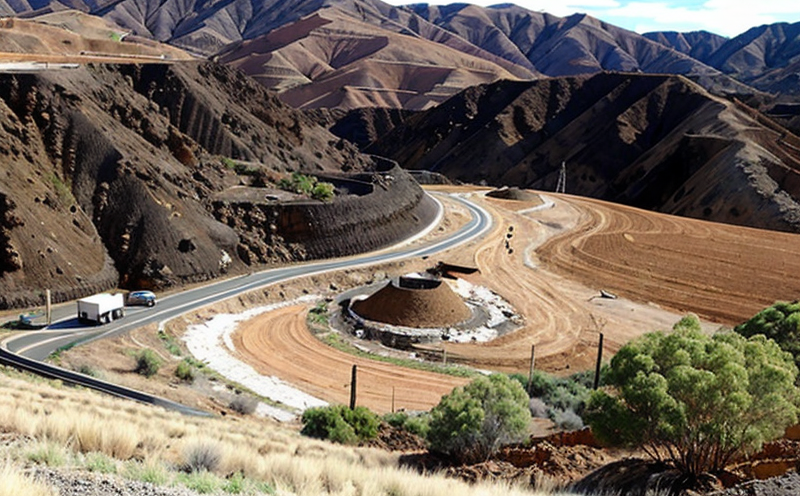ASTM D422 Particle Size Distribution Testing of Reclaimed Soils
The ASTM D422 test is a critical procedure used to determine the particle size distribution (PSD) of reclaimed soils. This testing method is widely recognized in environmental, mining, and reclamation sectors as part of comprehensive rehabilitation plans aimed at restoring land after mining activities or other industrial disturbances.
The PSD data obtained through this process provides essential information for quality managers and compliance officers to ensure that the reclaimed soil meets specified standards for use in land restoration. For R&D engineers, it is a vital tool for understanding how different particle sizes interact with each other and influence the overall effectiveness of reclamation efforts. Procurement teams can rely on ASTM D422 results when selecting suitable materials for rehabilitation projects.
The testing process involves several steps: first, the sample must be prepared by drying and sieving to remove any oversize particles or unwanted material. Then, a hydrometer method is applied where the soil suspension is placed in graduated cylinders filled with water of known specific gravity. Based on their buoyancy, particles settle into distinct layers corresponding to different sizes. Finally, measurements are taken at various depths within these layers.
Accurate measurement and reporting are crucial aspects of this testing procedure. Compliance officers need reliable data for regulatory submissions while R&D engineers require precise information to optimize reclamation strategies. By providing consistent, accurate results, ASTM D422 plays a vital role in ensuring the effectiveness of land restoration efforts across various environments.
The importance of particle size distribution cannot be overstated when considering environmental sustainability and economic efficiency in mining operations. Properly conducted tests like those specified by ASTM D422 help minimize risks associated with potential failures during reclamation projects, thereby saving costs related to corrective measures later on.
Why It Matters
The significance of accurately measuring the particle size distribution (PSD) in reclaimed soils extends beyond mere academic interest; it has profound implications for both environmental protection and operational efficiency within the mining sector. PSD testing ensures that the soil used in rehabilitation efforts meets specified standards, which is essential for successful reclamation projects.
From an ecological standpoint, understanding the particle size distribution helps prevent erosion by ensuring that there is enough coarse material to anchor plant roots while maintaining sufficient fine particles to retain moisture and nutrients crucial for vegetation growth. This balance enhances biodiversity and supports long-term sustainability goals set forth by environmental regulations such as ISO 14001.
Operational efficiency is also significantly impacted by PSD testing results because it informs decisions regarding soil preparation, mixing ratios, and application methods. For instance, knowing the exact particle composition allows engineers to design more effective leachate collection systems or drainage layers tailored specifically for the reclaimed area's unique conditions.
In summary, accurate PSD measurements are indispensable for achieving desired outcomes in mine rehabilitation projects. They contribute directly towards meeting legal requirements imposed by authorities like OSHA and EPA while fostering healthier ecosystems capable of supporting diverse flora and fauna.
Why Choose This Test
The choice to utilize the ASTM D422 particle size distribution testing method for reclaimed soils is driven by its precision, reliability, and relevance to real-world scenarios encountered in mining operations. Herein lies why this particular test stands out among other available options:
1. Precision: The hydrometer technique employed in ASTM D422 offers a high degree of accuracy when determining particle sizes within the range of 0.063 mm to 5 mm. This level of detail is crucial for ensuring that reclaimed soils meet required specifications.
2. Reliability: The standardized procedure outlined in ASTM D422 ensures consistent results across multiple samples, making it a dependable tool for quality control purposes during reclamation projects.
3. Relevance: By providing specific particle size information, the test aligns closely with practical needs identified by environmental agencies and industry stakeholders involved in land restoration activities.
Use Cases and Application Examples
The application of ASTM D422 particle size distribution testing extends far beyond academic research; it finds practical use in numerous real-world scenarios. Here are some specific instances where this test proves invaluable:
1. Regulatory Compliance: In compliance with national and international standards like ISO 14001, the PSD data obtained from ASTM D422 is essential for demonstrating adherence to environmental regulations.
2. Research & Development: Engineers engaged in developing innovative reclamation techniques benefit greatly from knowing the exact particle size distribution of reclaimed soils. This knowledge enables them to design more effective solutions that address specific challenges faced during land restoration efforts.
3. Quality Control: During mining operations, quality managers rely on ASTM D422 results to ensure consistency in soil preparation processes and final product quality.





